
There are few birds in the sprawl of suburbia or the sylvan ideal of semi-rural existence as appreciated as wrens. Sure, they may lack the audacious colors of jays or the imposing attitudes of raptors, but it is wrens, with jaunty tails and brazen attitudes and ringing, rambling voices, that re on anyone’s short list of favorite garden birds for almost as long as humans have paid attention to birds. The name wren first entered language to refer to that bouncy bird we now call the Eurasian Wren in the 8th Century as the Old English wraenna. It’s not for nothing that the English language loves to use the silent “w” when discussing things that are twisty or bendy (think wry, wrist, or wrench), and in the case of our titular bird it has to do with its tendency to disappear into tangles and dense brush, twisting through the ramble (or wramble?) like a snake through grass.
Carolina Wren, photo by Nate Swick
The name may go back farther than that, to the Old High German wrendo, but its etymology is a mystery beyond that. The point of all this is most certainly that wrens have been in the public consciousness for centuries, and we’ve loved them the whole time. Which, of course, is why we call them troglodytes.
That family name Troglodytidae has now come to mean a barbarian, but way back when it just meant “cave-dweller”. This is another reference to their more or less reclusive nature and tendency for the birds to forage in dark places and crevices. And they absolutely do that, but there are few birds in north America, at least, for which the family seem less fitting.
Our friends in the Old World can claim the seminal member of its clan known definitively as Wren. But for those of us in the Americas, the cup runs over with species of Troglodytes. Particularly in the Neotropics where wrens reach their biodiverse zenith with species of varying shades and patterns of brown, gray, and cream, and all with impressive, elaborate, voices and varying attitudes about revealing themselves for desired looks.
Winter Wren, photo by Corey Finger
We’re spoiled then, in the northern Americas, by our loud and garrulous wrens. While plain, House Wrens are frequently seen, and even more frequently heard, across much of the hemisphere from Canada to Argentina, and in the eastern United States there are few birds as well known as the Carolina Wren, whose propensity for nesting in just about any covered spot, from barbeque grills to unused outhouses to mailboxes, makes them both an endearing and occasionally frustrating co-tenant.
But just about anywhere on the continent wrens are a common and, more importantly, obvious representative of the local birdlife. Our North American wrens – and I’m assuming most of those people reading are in North America – run the gamut from the tiny, secretive, Winter Wren of the boreal forests of the far north to the massive, loud Cactus Wren of the desert southwest. We have Rock Wrens which motor along the ground and over the boulders of their western habitats like tiny roadrunners and gnomic Pacific Wrens of the old growth forests of the northwest. We have a pair of wetland obligates in Marsh Wren and Sedge Wren and the voice of the montane west in Canyon Wren.
Canyon Wren, photo by Debbie Wheeler
And that’s not even the half of it once you go south of the border into the land of the dual-singing Wood-Wrens, secretive South American species with amazing names like Musician Wren and Happy Wren, the epic foot-long Giant Wren of Chiapas, and the charismatic members of genus Campylorhynchus who build giant ball-nests in cacti. We love wrens, and there are lots of things to love about them even as we’re finding out that in the midst of those species we’ve known for so long lie cryptic species within species, differentiated by song and subtlety, which is fine because it wrens are good at one thing it’s singing and many are anything but subtle in their attitudes.
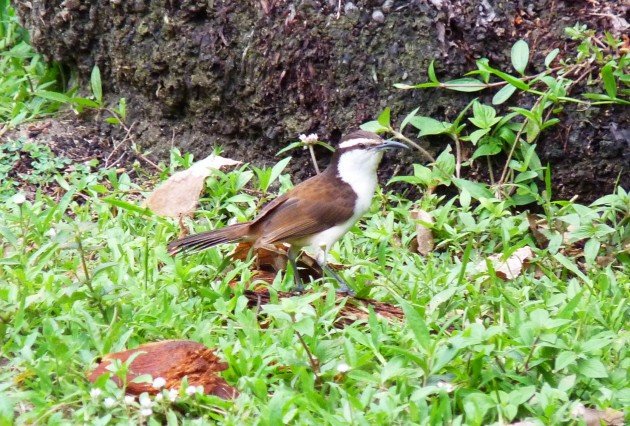
Bicolored Wren, photo by Scott Winton
Which is perhaps why the name wren is applied to several unrelated species in the old World. Granted they fill similar niches, skulkers with glorious songs and devilish demeanors, but it’s a shame to see the name wren turned into one of those taxonomically useless terms like sparrow and bunting solely due to the globe-trotting of homesick British naturalists. It could be worse, though. Wren Babblers are befitting the name as skulking songsters, and while Australian Fairy Wrens may not be true wrens due to their ostentatious, though beautiful, plumage they fill the lovable little garden bird domain pretty well on a continent that has so many unusual caveats with regard to its wildlife.
Barred Wren Babbler, not a wren, photo by Adam Riley
So guess we’ll take them, though the true wrens remain the fortune of those of us in the Western Hemisphere, and I’ll be danged if I ever have to give them up.
–=====–
Boucard’s Wren, Campylorhynchus jocosus
- Boucard’s Wren – Peter Thoem, My Bird of the Day
Rock Wren, photo by Alex Lamoreaux
Cactus Wren, Campylorhynchus brunneicapillus
- Cactus Wren – Peter Thoem, My Bird of the Day
- Is your nest safe? – Gail Morris, God Girl Gail
- Cactus Wren Campylorynchus bruniecapillus – Corey Finger, 10,000 Birds
Winter Wren, Troglodytes hiemalis
- Winter Wren – Peter Thoem, My Bird of the Day
- The Winter Wren – Corey Finger, 10,000 Birds
- Winter Wren – Drew Weber, the Nemesis Bird
House Wren, photo by Anne Greene
Pacific Wren, Troglodytes pacificus
- Pacific Wren – Peter Thoem, My Bird of the Day
- A Pacific Wren Dilemma – Nate Swick, the Drinking Bird
- Pacific Wren, Part One – Nathan Pieplow, Earbirding
- Pacific Wren, Part Two – Nathan Pieplow, Earbirding
- Pacific Wren – Robert Mortenson, Birding is Fun
Eurasian Wren, Troglodytes troglodytes
- The King of Birds – Chris Foster, Considering Birds
- Baby Eurasian Wrens – Jochen Roeder, 10,000 Birds
Munchique Wood-wren, photo by Natalia Ocampo-Peñuela
House Wren, Troglodytes aedon
- A Mother’s Work is Never Done – Julie Gidwitz, Nature’s Splendor
- House Wren Excavates a Nest Cavity – Larry Jordan, The Birders Report
- We have Babies – Kelly Riccetti, Red and the Peanut
- House Wren Troglodytes adeon – Corey Finger, 10,000 Birds
- The Creation of a House Wren Nest Hole – Corey Finger, 10,000 Birds
- How’s About Those House Wrens – Mike Bergin, 10,000 Birds
Rock Wren, Salpinctes obsoletus
- Rockin’ with the Rock Wren – Larry Jordan, The Birders Report
- Are you Ready to Rock (Wren) – Corey Finger, 10,000 Birds
- Rock Wrens – Alex Lamoreaux, The Nemesis Bird
Canyon Wren, Catherpes mexicanus
- A Canyon Wren Mystery Solved – Nathan Pieplow, Earbirding
Marsh Wren, Cistothorus palustris
- Marsh Wren Building a Nest and Singing – Larry Jordan, The Birders Report
- Marsh-shrub Leaper – Nate Swick, The Drinking Bird
Marsh Wren, photo by Matthew Perry
Sedge Wren, Cistothorus platensis
- Sedge Wren in the High Meadow – Kelly Riccetti, Red and the Peanut
Bewick’s Wren, Thryomanes bewickii
- There’s a Bewick’s Wren in our Garden – Larry Jordan, 10,000 Birds
- Bewick’s Wren Range Expansion? – Robert Mortenson, Birding is Fun
Bewick’s Wren, photo by Matthew Perry
Carolina Wren, Thryothorus ludovicianus
- Interesting Bird Facts: Carolina Wren – Sam Brunson, Two Birders and Binoculars
- Carolina Wren – 1, Starlings – 0 – Kelly Riccetti, Red and the Peanut
- Wrens in the Ivy – Shey Wicklund, Shey Wicklund Photos
- Carolina Wren at Van Saun Park – Corey Finger, 10,000 Birds
- Cooperative and Curious Carolina Wrens – Corey Finger, 10,000 Birds
- Carolina Wren Mystery Spots – David Sibley, Sibley Guides
- Nesting Carolina Wrens in the Backyard – Drew Weber, The Nemesis Bird
- Carolina Wren – Robert Mortenson, Birding is Fun
Honorary Wrens
- What’s in a Song – Blue Wren Song Slowed Down – Sarah Koschak, Listening Earth Blog
- Observations on the Streaked Wren Babbler – YC Wee, Bird Ecology Study Group
- Fabulous Fairy Wrens – Duncan Wright, 10,000 birds


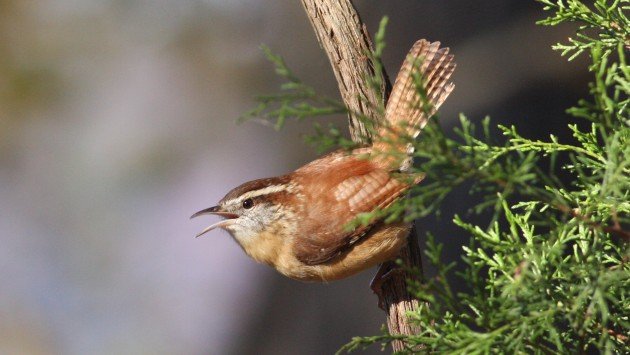
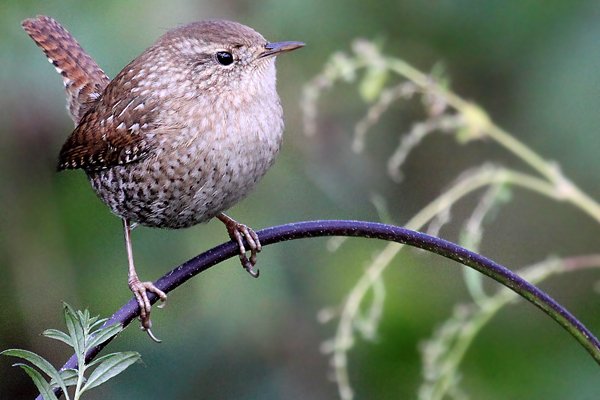
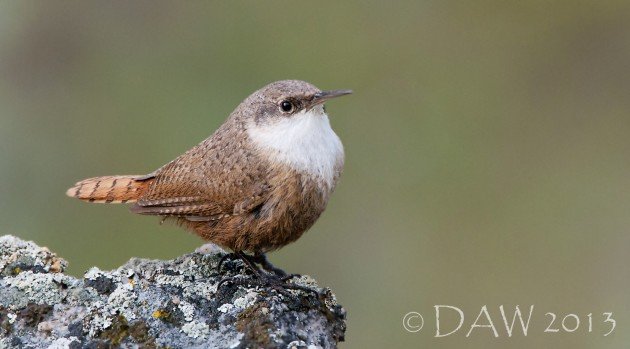
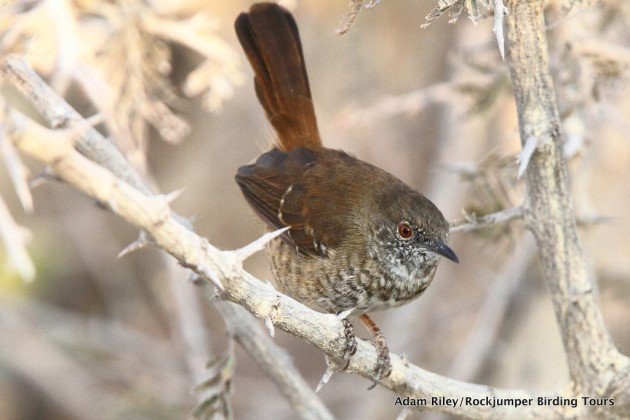
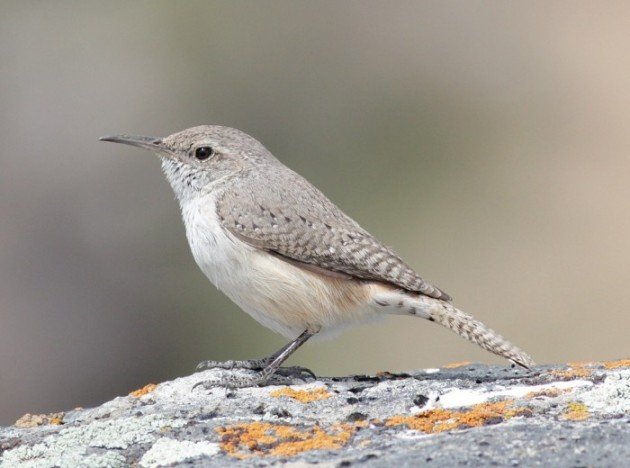
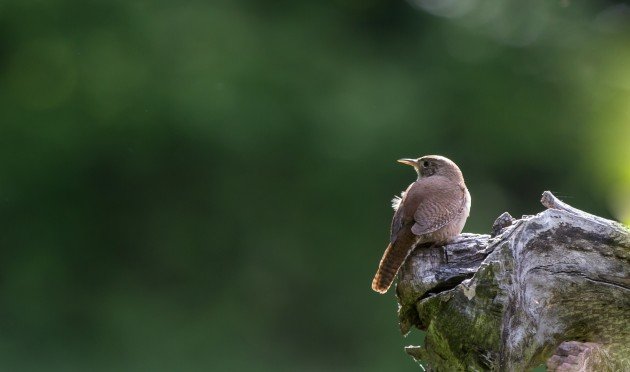
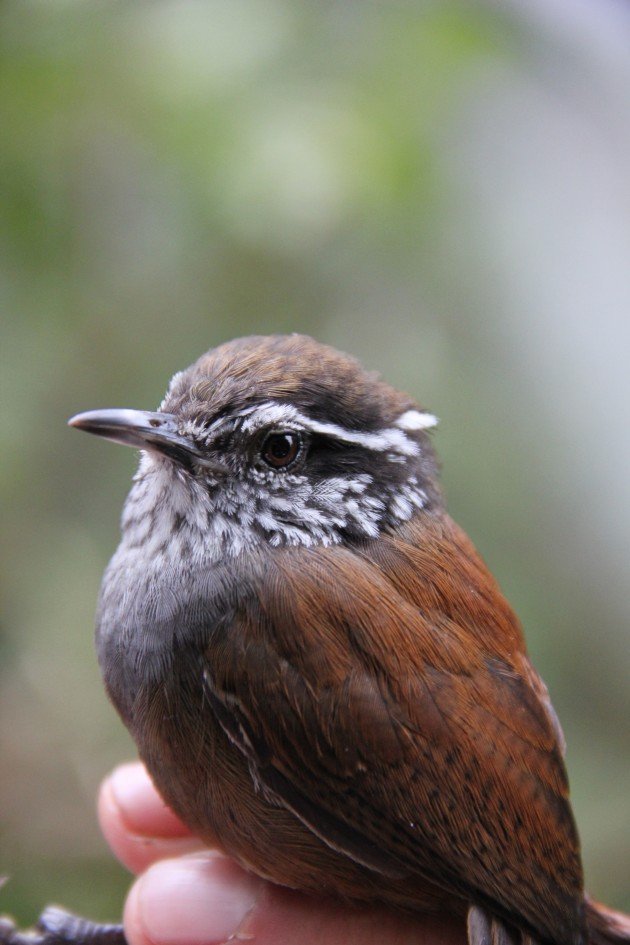
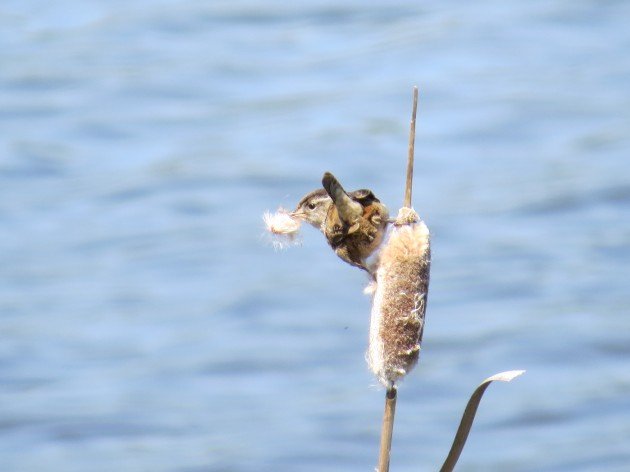
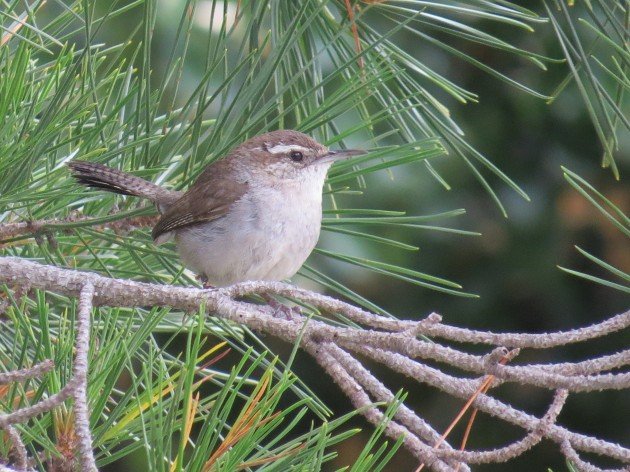







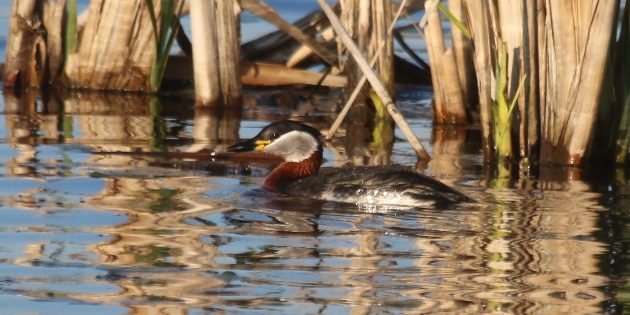



Thanks again for this post. Looking forward to the next topic.
Thanks for a wonderful post with fabulous photos! Here on the Olympic Peninsula, Pacific Wrens serenade hikers with a beautiful song on almost every trail, but they almost always stay hidden from view.
There’s a lot of good wren shots in here…but Corey’s Winter Wren is something else!
Thanks, Felonious!